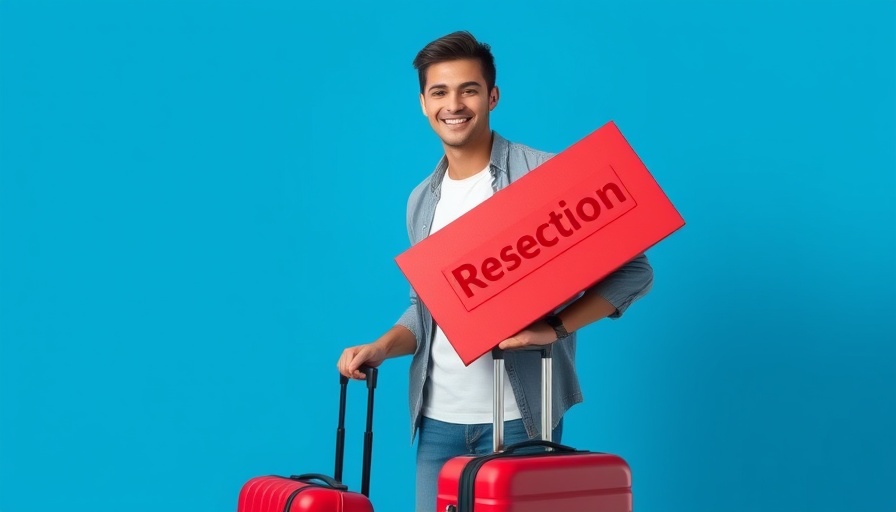
The Carry-On Conundrum: Why Size Does Matter
For the modern business traveler, navigating the complexities of air travel extends beyond the boardroom to the airport gates. The carry-on bag has become an essential tool, yet missteps in selection can lead to costly disruptions. Airlines have tightened their compliance rules regarding carry-on luggage, setting restrictions that many popular brands fail to meet. With a growing body of evidence illustrating the decline in usability of these bags, it is crucial for travelers to be cognizant of current regulations.
Understanding Airline Carry-On Regulations
When it comes to carry-on luggage, size and weight limits are paramount. Typically, bags measuring beyond 22 x 14 x 9 inches are problematic. The repercussions can be extensive, ranging from unexpected gate checks to fees soaring between $50 and $100. Underlying this challenge is a marketing disconnect; many reputable brands claim compliance while presenting products that fail to meet the standards enforced by airlines.
Brands on the Watchlist: What to Avoid
Brands like Amazon Basics, despite their affordability and popularity, have been spotlighted for not adhering to size restrictions. For instance, the Amazon Basics carry-on measures 14.8 x 10 x 21.7 inches, easily exceeding the checkpoints of many airlines. If avoiding extra fees is a top priority, opting for brands such as TravelPro offers a more compliant and durable option. With alternatives like the TravelPro Maxlite Air V2 maintaining an ideal 22 x 14 x 9 inch size, choosing wisely can prevent unneeded financial penalties.
Balancing Aesthetics and Functionality
In today's fashion-driven world, the design of a carry-on is often weighed against practicality. While the Delsey Paris Shadow Air 2.0 may boast elegant aesthetics, it ultimately fails to meet compliance criteria, pushing consumers into a position of compromise. Conversely, the TravelPro Platinum Elite offers a stylish exterior while meeting industry standards. This balance between functionality and aesthetics meets the needs of the style-conscious executive traveler.
Technological Advances in Luggage Solutions
The integration of technology in travel solutions has emerged as a significant theme in improving the traveling experience. Luggage manufacturers are increasingly leveraging AI-driven insights to create solutions that promise enhanced compliance and durability. Moreover, the rise of smart luggage with integrated tracking and weight sensors empowers the modern traveler, ensuring they remain aligned with regulations even before they step foot in the airport.
Environmental Considerations and Sustainable Choices
As the conversation around sustainability gains momentum, modern travelers are also prioritizing eco-friendly choices in their luggage. Brands that produce high-quality, durable bags that align with environmental goals are gaining traction. The Broy hard-sided carry-on exemplifies this trend with a focus on longevity and sustainability, advocating the “repair, don’t replace” philosophy. This principle resonates with the contemporary consumer, fostering a connection between travel and responsible living.
Future Trends: The Changing Landscape of Air Travel
The landscape of air travel continues to evolve, with emerging regulations and trends reshaping how we perceive carry-on luggage. As flight capacities increase and companies become more stringent on compliance, the growing emphasis on smart, compliant, and stylish luggage seems inevitable. More brands will need to innovate, focusing on AI-driven design and sustainable materials to cater to the discerning traveler.
As you prepare for your next business trip, evaluating the right luggage can optimize your travel experience. In today's fast-paced world, a well-chosen carry-on bag can translate to more than just convenience; it can elevate your operational efficiency and align with your values.
 Add Row
Add Row  Add
Add 


Write A Comment